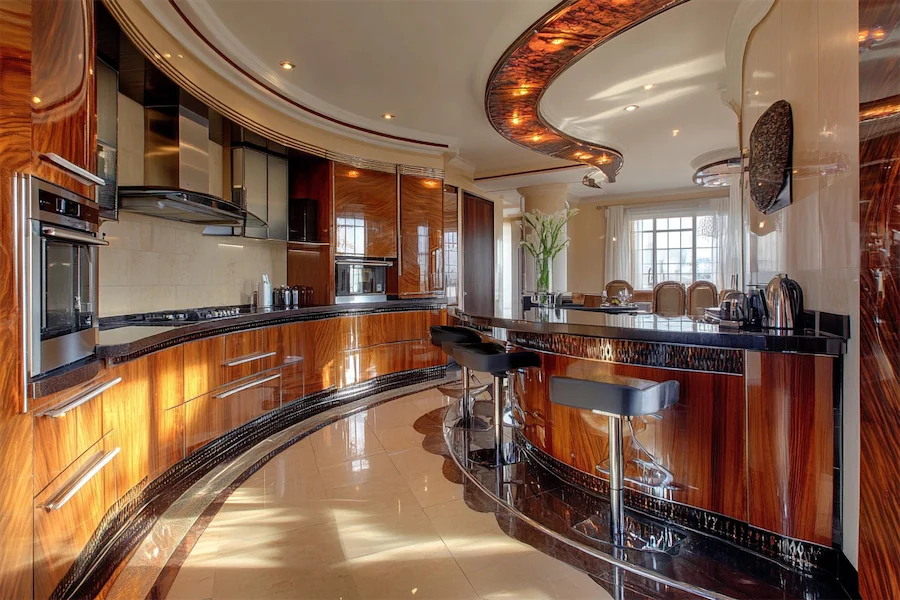An Art Deco kitchen embodies the glamour and sophistication of the early 20th century, characterized by bold geometric patterns, luxurious materials, and sleek lines. This article explores the history, key features, applications, and considerations when designing an Art Deco kitchen.
Introduction to Art Deco Kitchens
Art Deco, a design movement that emerged in the 1920s and 1930s, is renowned for its emphasis on modernity, elegance, and functionality. In kitchen design, Art Deco introduces a sense of luxury and timeless style, incorporating rich color palettes, geometric motifs, and high-quality finishes.
History and Origins of Art Deco Kitchens
The Art Deco movement originated in France in the early 20th century, gaining international prominence after the 1925 Exposition Internationale des Arts Décoratifs et Industriels Modernes in Paris. This design style reflects admiration for the modernity of the machine and the inherent design qualities of machine-made objects, emphasizing simplicity, symmetry, and geometric forms.
Key Features of Art Deco Kitchens
Art Deco kitchens are distinguished by several hallmark features:
- Geometric Patterns: Incorporation of bold geometric shapes, such as chevrons, zigzags, and sunburst motifs, often seen in tile work, backsplashes, and flooring.
- Luxurious Materials: Use of high-quality materials like marble, chrome, glass, and exotic woods to convey opulence and sophistication.
- Bold Color Palettes: Employment of rich, contrasting colors, including deep blacks, vibrant reds, emerald greens, and metallic accents, to create dramatic visual interest.
- Streamlined Cabinetry: Installation of sleek, flat-panel cabinets with minimal ornamentation, often featuring lacquered or glossy finishes to enhance the modern aesthetic.
- Decorative Lighting: Inclusion of statement lighting fixtures, such as chandeliers or pendant lights with geometric designs, to add a touch of glamour and illuminate the space effectively.
Applications of Art Deco Kitchens
The versatility of Art Deco design allows it to be adapted in various kitchen settings:
- Urban Apartments: Introducing Art Deco elements can add a sense of luxury and historical charm to contemporary urban kitchens.
- Historic Homes: Restoring or renovating kitchens in period homes with Art Deco features can enhance the property’s original character.
- Modern Constructions: Incorporating Art Deco motifs can provide a unique and stylish contrast to modern architectural designs.
Considerations When Choosing an Art Deco Kitchen
When planning an Art Deco kitchen, consider the following:
- Cohesion: Ensure that the Art Deco elements harmonize with the overall interior design of your home to create a unified aesthetic.
- Material Selection: Opt for durable and high-quality materials that reflect the luxurious nature of Art Deco design while being practical for kitchen use.
- Functionality: Balance decorative aspects with functional requirements to maintain a kitchen space that is both beautiful and efficient.
Conclusion
Art Deco kitchens offer a blend of elegance, functionality, and timeless appeal. By understanding their history, key features, and applications, you can design a kitchen that reflects the glamour of the Art Deco era while meeting contemporary needs.
